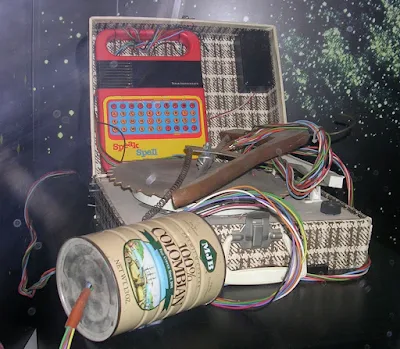
I got a nice e-mail from Keith, VE3TZF, that got me thinking about "The Amateur Scientist" by C.L. Strong. The Wiki article on this book is very interesting:
http://en.wikipedia.org/wiki/The_Amateur_ScientistCheck out the part about Forrest Mims.
Here's Keith's e-mail:
----
Hello again Bill,
In your podcast you frequently make reference to the book,
The Amateur Scientist.
This got me thinking back to what REALLY got me started along the path of building stuff for fun.
There were three books I remember reading over and over, even though at the time I had a very hard time really understanding what was on all of those pages. Those books were:
1. 'Codes, Ciphers, and Secret Writing', by
Martin Gardner (unfortunately, he recently passed away).
2. Some type of 'build yourself a science laboratory' book.
3. Some type of 'build
electric motors' book.
I explicitly remember that one of the tasks in the 'science laboratory' book was to take a burnt out light bulb, etch around the neck, break it off, and turn it into a flask. The flask was supposed to sit on a stand that you already made out of wire (a coat hanger?). I've been trying all sorts keyword searches in
Google to fine the name of the book. I'm sure I would recognize it if I saw it. Is this 'The Amateur Scientist'? The closest I have gotten is "Build-it-yourself science laboratory: work like a scientist: build your own equipment, make real findings" by the
Oregon Museum of Science and Industry. I'm still looking...
On the other hand, when you described the trivial
electric motor, something twigged in my memory. I've built one of those! Many of those in fact! Decades ago! The 'electric motor' book made reference to 3 basic designs. They were called the 'mini', the 'midi', and the 'maxi'. The 'mini' motor was in fact the trivial electric motor. The 'midi' motor used fixed magnets on the armature, and the 'maxi' motor used electromagnets only. I remember salvaging an old wooden pencil box, and stealing some of my mom's
knitting needles, to build the 'maxi' motor. I used a 6 volt lantern battery to power it. It worked extremely well, but got incredibly hot! And the sparks! I had not yet learned about volts, amps, and watts. Also at the time I was too young to get the mini/midi/maxi references to womens' skirts.
After a little searching with Google, I hit the jackpot:
* "How to make and use electric motors", Al G. Renner - 1974
* Text and diagrams give instructions for building the mini, midi, and maxi motors and for performing various experiments.
Now I just have to find a copy.
I'm currently spending a lot of time with my nephew, building blinking LED circuits, buzzers, motors, and listening to
Morse code. He's really getting into it, and I KNOW that this is important.
I just wanted you to know that your podcast (and excellent book) have far reaching impacts that you may have never intended.
-Keith Robert Murray VE3 TZF

























